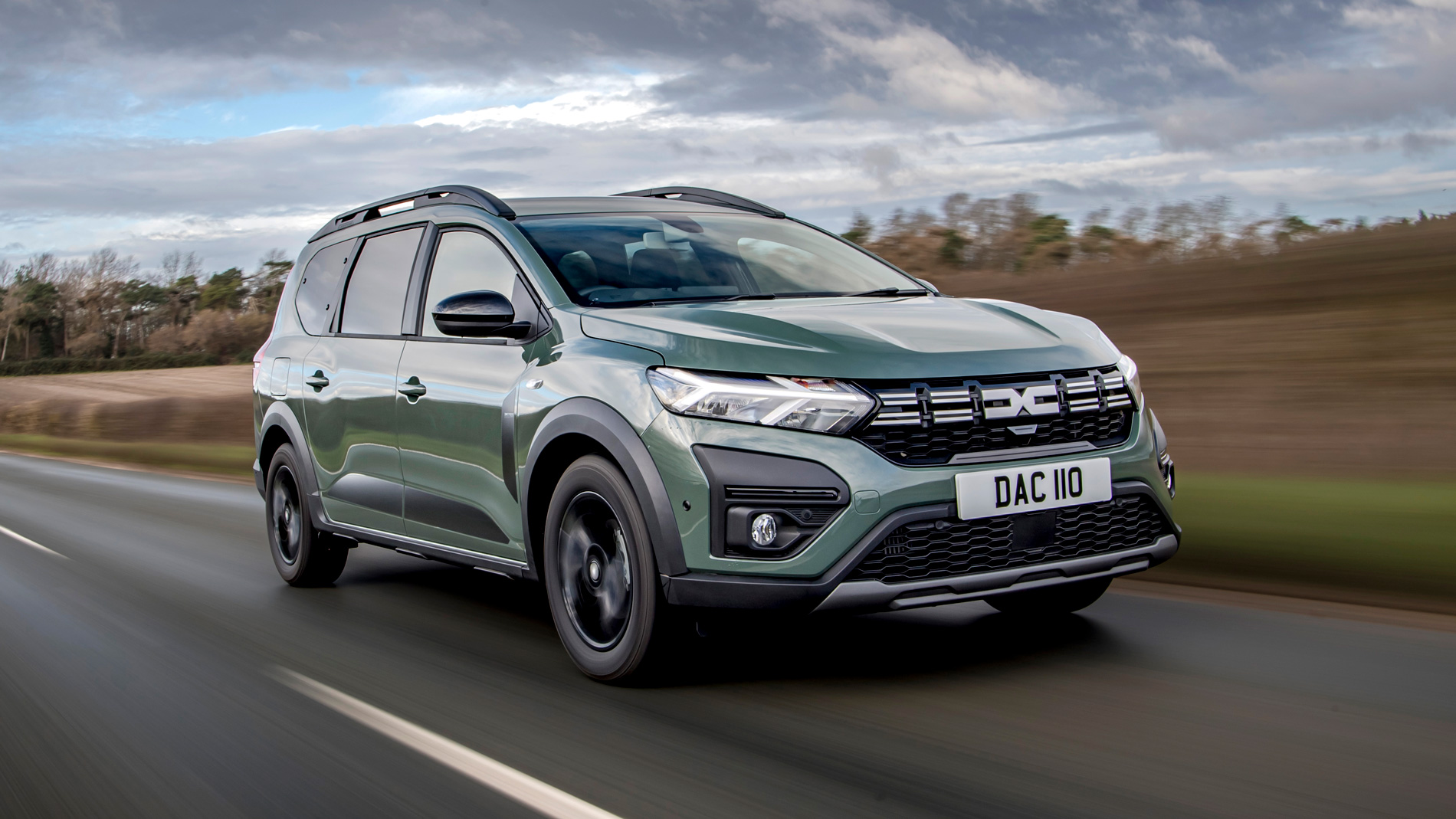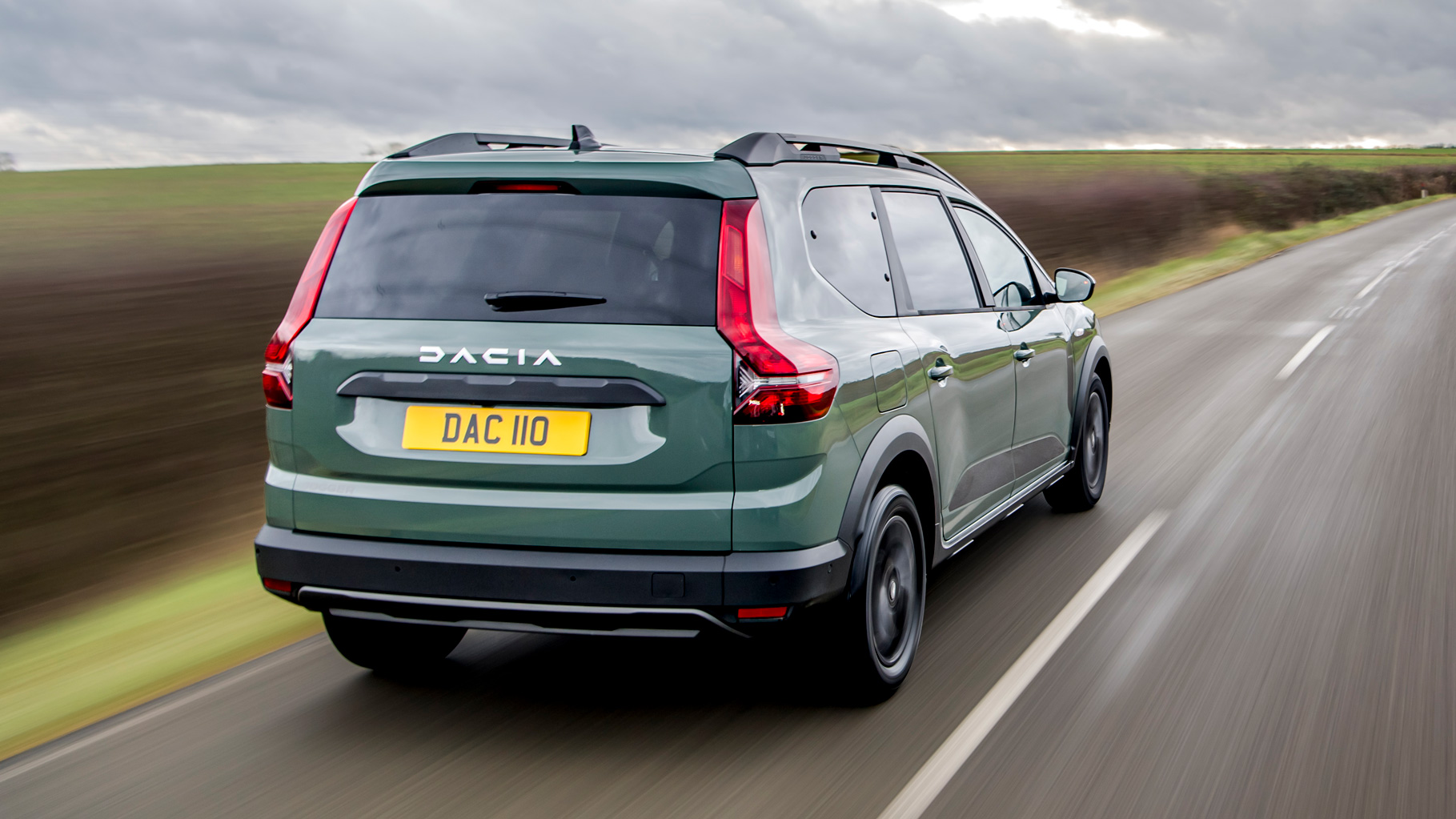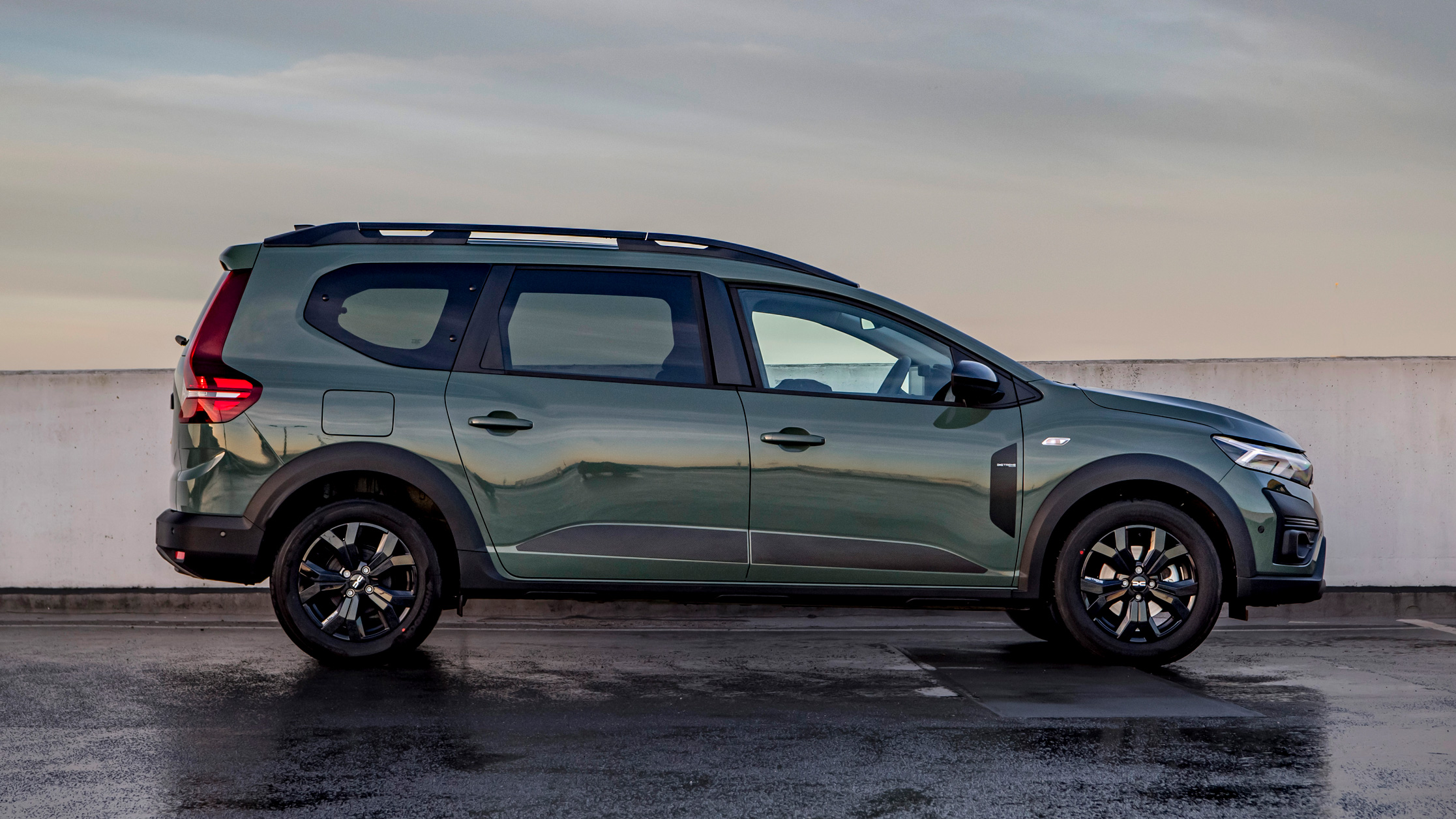
Good stuff
Cheap, cheerful, practical seven-seater
Bad stuff
Lacks bells and whistles families might want, hybrid's pretty coarse
Overview
What is it?
Dacia started out as a sort of secondhand warehouse for all the tech that Renault couldn't do anything with anymore, but instead of sitting around for the whole pandemic eating crisps, it put a whole lot of effort in a new look. So now we've got an entirely refreshed range of Dacias (the Sandero and Duster are looking lovely) and even a whole new model, this seven seater MPV/estate mash-up. And it's sitting on the latest Renault tech, too, which is lovely.
It might be a bit strange to try and swallow the idea of Dacia as a 'lifestyle' brand rather than an overtly bargain basement one, but the cheap prices are still there, it's just the company colour is now khaki green rather than dark blue, and its new logo is a minimalist Christmas cracker made up of a stylised D and C mashed together. And why not.
So, is the Jogger the UK’s cheapest seven seater?
Like we said, the lifestyle schtick lasts as long as it takes to wave the price tag under your nose. You get seven seats as standard here, and the headline number is the £18,295 Dacia will ask for the entry level car, which is less than half the cost of a Land Rover Discovery Sport or under a third of the price of an Audi Q7. Actually, Dacia thought it was putting the car up against the new Citroen Berlingo XL, but they went and made that car electric only and it costs around £33k (though you can now get the five seater version with petrol or diesel power).
But it must all feel very cheap, right?
The Jogger certainly doesn't feel like a premium car – there's lots of hard plastic and exposed bits of metal about the place, but you don't feel like you're missing out here, the Jogger isn't pretending to be more than it is. What you end up with is a bargain family car that doesn't mind the abuse of everyday life.
For a long time the Dacia way was to wait until a Renault gets really old, do a post-life facelift and sell it for peanuts. The second-generation Dacia Sandero that went off sale in 2020 was based on a platform originally developed for the Renault Clio in 2002. Phew.
Thankfully the latest Dacias are all based on Renault’s CMF-B platform, though the Duster is a holdout on the antique underpinnings, it’ll only be around for a little while longer. There’s nothing about the Jogger that makes it feel old-fashioned, in fact it’s pretty decent to drive. The petrol version feels pleasingly mechanical, and there's fun to be had working the little 109bhp 1.0-litre turbo 3cyl engine and stirring the six-speed manual gearbox.
The hybrid uses a 1.6-litre 4cyl nat-asp petrol and a small e-motor pumping out 138bhp to offer a combination of electric-assisted petrol running and EV-only driving.
So the Jogger drives well?
It's no sports car of course, but yes, the Jogger does drive well – and it’s really thanks to the effort that Dacia has put in to keeping weight down. It tips the scales at a frankly astonishing 1,200kg (the hybrid adds 180kg to that figure), which is light by any car’s standard let alone a seven-seat family wagon.
The front end feels proactive and alert on the way into corners because there isn’t so much weight hanging over the front wheels. There’s decent steering feel too, and even a little kick through the gearstick as you come off the clutch. It’s the one aspect of the car that actually does feel old-fashioned, but refreshingly so. The hybrid carries more weight over the nose with the bigger engine and e-motor, but the car still feels spry on the move.
Our choice from the range

What's the verdict?
It could be that we’ve just driven too many electric vehicles recently, with everything driven by wire, but the Jogger has a rather pleasing mechanical feel to proceedings. It’s actually quite fun for a family bus, although given we've only driven it without a full roster of passengers aboard, perhaps we need to pile everyone in before we give a definitive judgement.
You may catch yourself looking at the Jogger and thinking of one or two little things that could really make it better. Would it benefit from more stuff? Perhaps not: for this price and with its ruthless attention to detail, the Jogger is great just the way it is.
The Rivals
Trending this week
- Car Review
Bentley Brooklands










